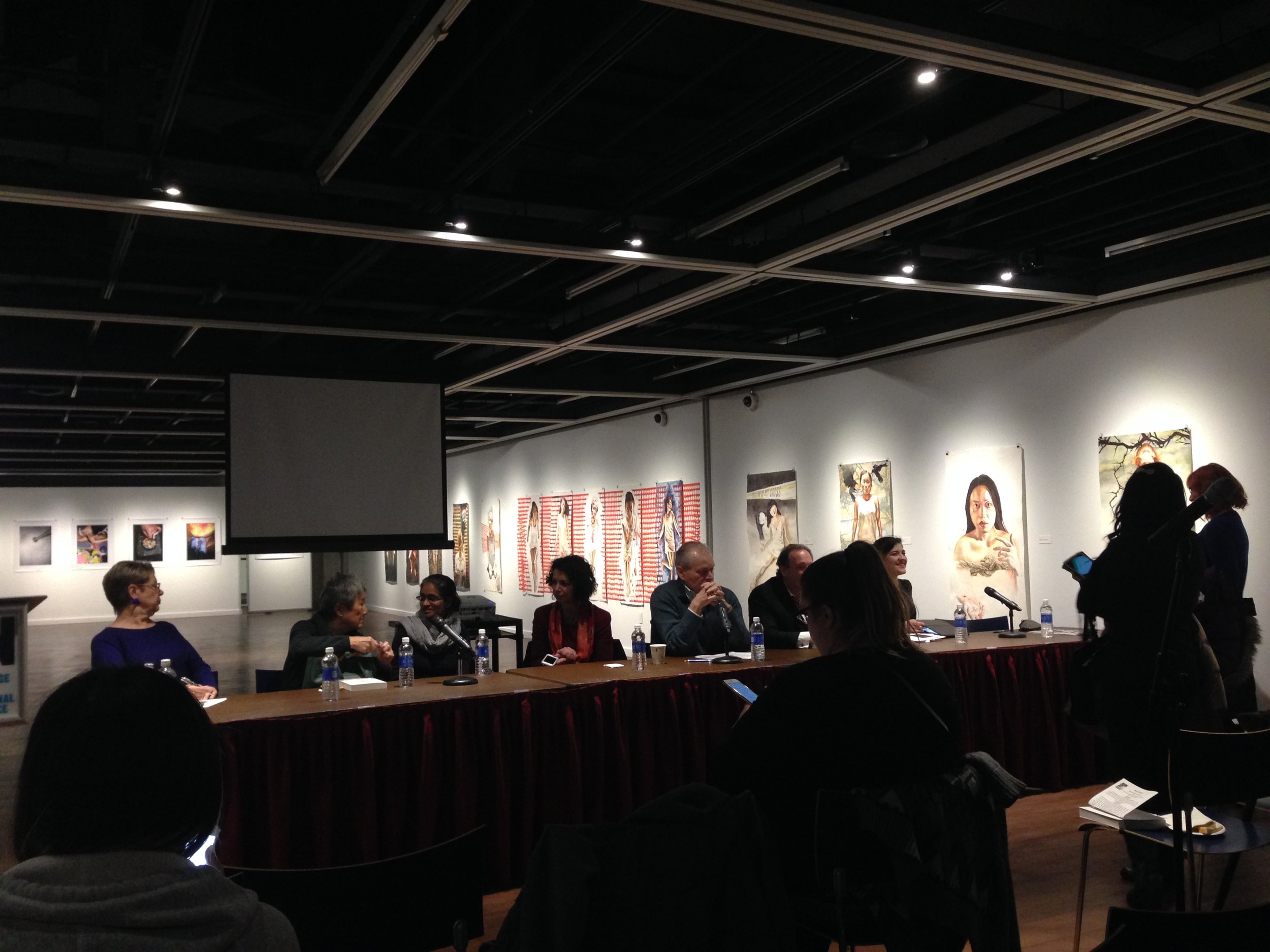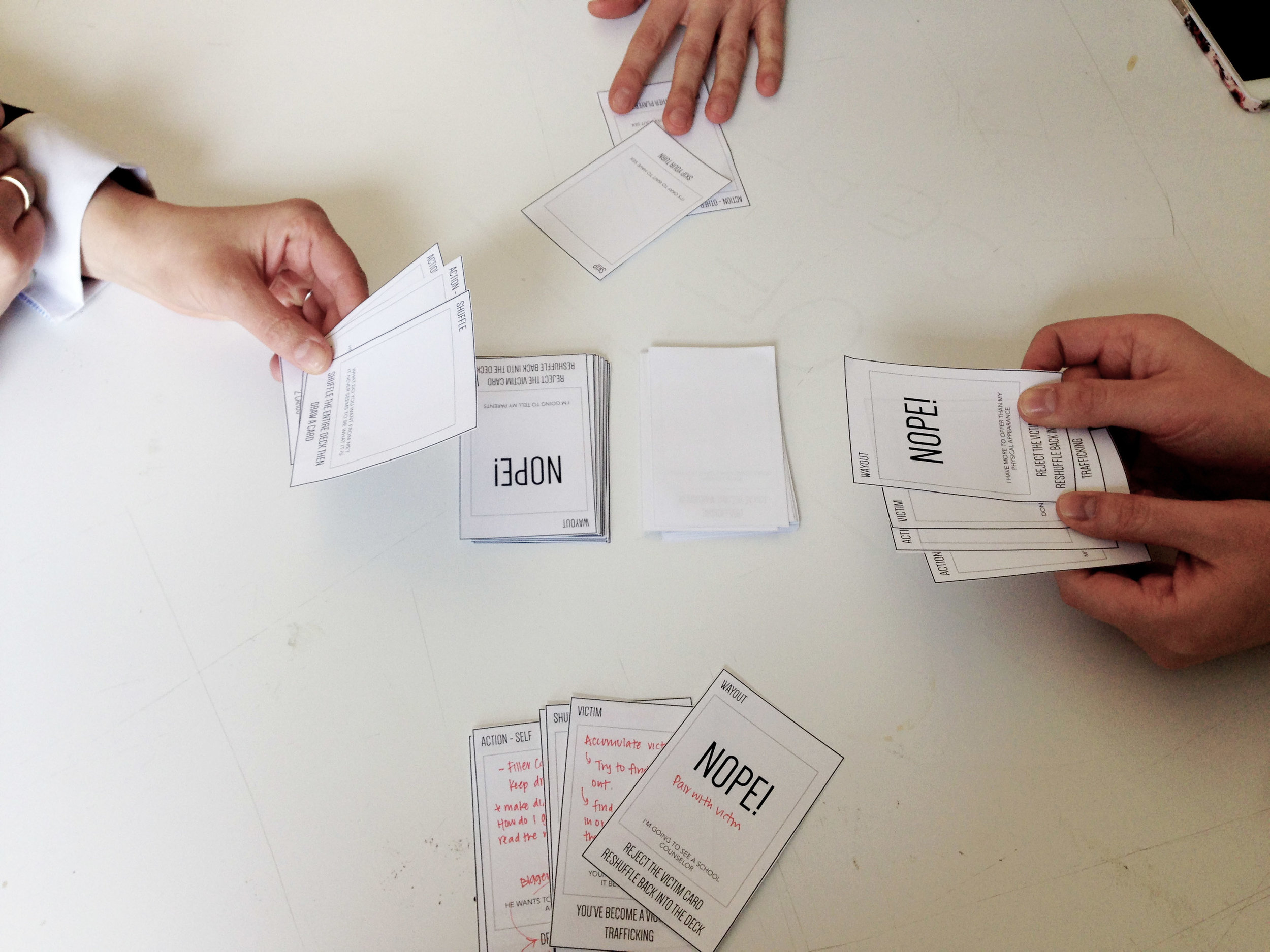Way Out Board Game
introducing play into learning and understanding the risks inherent in sex trafficking
Graduate Thesis project
Used as an educational tool to begin conversations about Human Trafficking and Child exploitation in middle school classrooms, the main focus of this game is to introduce and establish the understanding that anyone can be trafficked regardless of race, citizenship, socioeconomic status, or gender etc, through play mechanics such as chance, collaboration, narratives, and problem solving. The game aims to simulate a representation of key aspects of the trafficking industry, mainly its recruitment. No one is free from the risk, it is a matter of how we combat it (even if we don't see it) or respond to it (when we see it happening). The narrative structure of this game will allow kids to see possible signs of risks and then learn about the options and resources to a way out.
My Role
From September 2014 to December 2014, I conducted various research around areas of modern day slavery in North America, dedicating time to define the landscape and ecosystem of modern day slavery and human trafficking, and how it is still relevant today.
From January 2015 - May 2015, I partnered with ECPAT-USA to focus my research within the scope of commercial sexual explication of children in the United States.
Informed by the book Walking Prey by Holly Austin Smith (a survivor of child sex trafficking at age 14), I worked closely with Michelle (ECPAT’s director of private sector engagement), Danielle (a documentary film producer), Raleigh (the director of justice ministries), UNICEF’s end trafficking division, and other education and game design professionals (at Parsons, Columbia teachers college, and in the New York community) to identify opportunities for a design intervention.
The Research
Part I - Understanding the audience
A prevailing idea that has been restated by many of my research is that the issue of sex trafficking of children is rooted in the development of social values in children. It seems to me that when children are growing up in an atmosphere where they may be told daily that they are worthless, they are a burden, or that they are treated like objects of use, they then grow up to be parents and will pass on the same mentality and abuse to their children. It is a cycle of exploitation that grants traffickers vulnerable children to coerce and control. Because child sex trafficking can be pimp-controlled, family-controlled, gang-controlled, or organized crime-controlled. Anyone under the age of 18 who is recruited, transported, harbored, and induced to perform a commercial sex act is a victim of sex trafficking.
This project's Intent is to emphasize on the fact that this could happen to any child at any age and with any ethnic background. How might we build awareness for child sexual exploitation and ultimately prevent risks of victimization?
According to a recent report conducted by John Jay College of Criminal Justice and the Center for Court Innovation (2008) in New York, an estimated 45% of the children in commercial sex are boys, 48% are girls, and 8% transgender youths. They have identified (through interviews with a sample of 249 youths) that the reason to enter into prostitution was either to escape from an abusive home or was a result of early life traumas. Childhood abuse in the home indirectly increases the likelihood of later sexual victimization on the streets. Exposure to dysfunctional and disorganized homes puts youth on trajectories for early independence, suggesting the participation of street life in high-risk behaviors, increasing their probability of sexual victimization. Also, with the increase in access to the Internet, minors may not be forced or threatened into selling their bodies from a violent controller anymore. Anyone could post a photo of themselves or an advertisement online to schedule a client on their own. Whether a young person has to be sold by a “third party” in order to be identified as a victim of trafficking under the U.S law still remains an unsettling question. Let’s try to understand that no one chooses to sell their body for money, and that no one has ever said they value the “job benefits” in the sex industry. As a result of having limited options for survival, selling their bodies become their only option.
Part II - Build the Awareness
To continue my research, I looked at existing projects and campaigns within the realm of human trafficking in modern day slavery and separated them depending on their core mission: labor exploitation, or sexual exploitation; local or international programs; through what methodology: on the ground implementation or resources for public usage; what their primary mission is: prevention, rescue, protection, and restoration models (some organizations and campaigns cover more than one); and target demographic in terms of age and gender.
Part III - Designing the Experience
Education through play
What if the game mechanics - in itself - is attractive to kids? What if they want to play the game for the game, and then in turn learn something as they play.
I put the quotes, ideas, and insights from my various research into phrases and scenarios. They were filtered and synthesized accordingly for the targeted demographic of children age 9 to 14. The outcome of the project will bridge the gap between difficult information to accessible learning for children who may need it most. I made low fidelity prototypes for early testing of ideas and concepts to generate more research – especially for user-experience and learning outcomes. It was made for constructive reviews for iterative changes; each iteration was play-tested with my advisors, classmates, and friends.
Finally, the idea to incorporate the experience of being trafficked into the game mechanics was developed along with a facilitation handbook to explain each touchpoint.
The game was play-texted with a group of adults and a group of high school students.
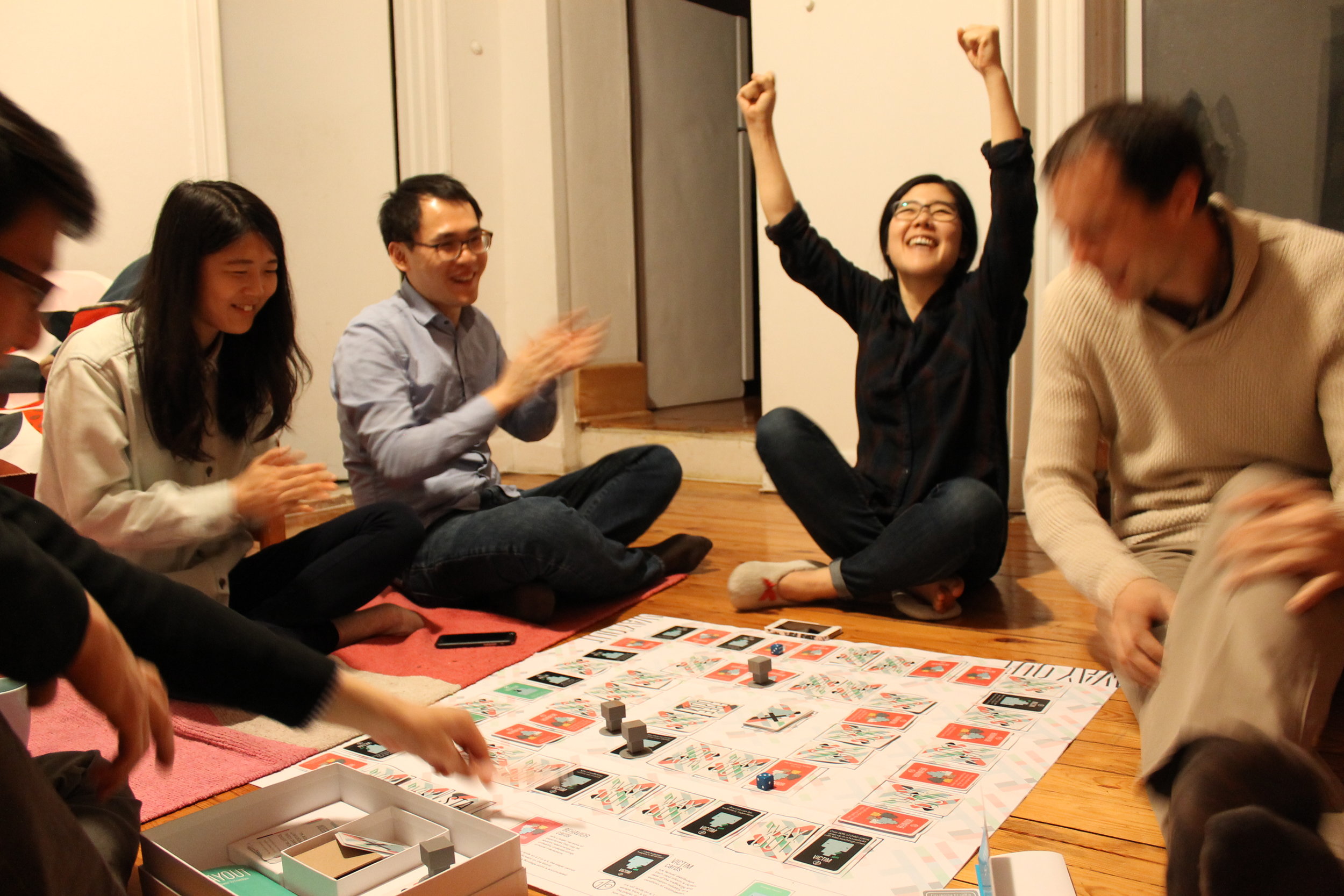

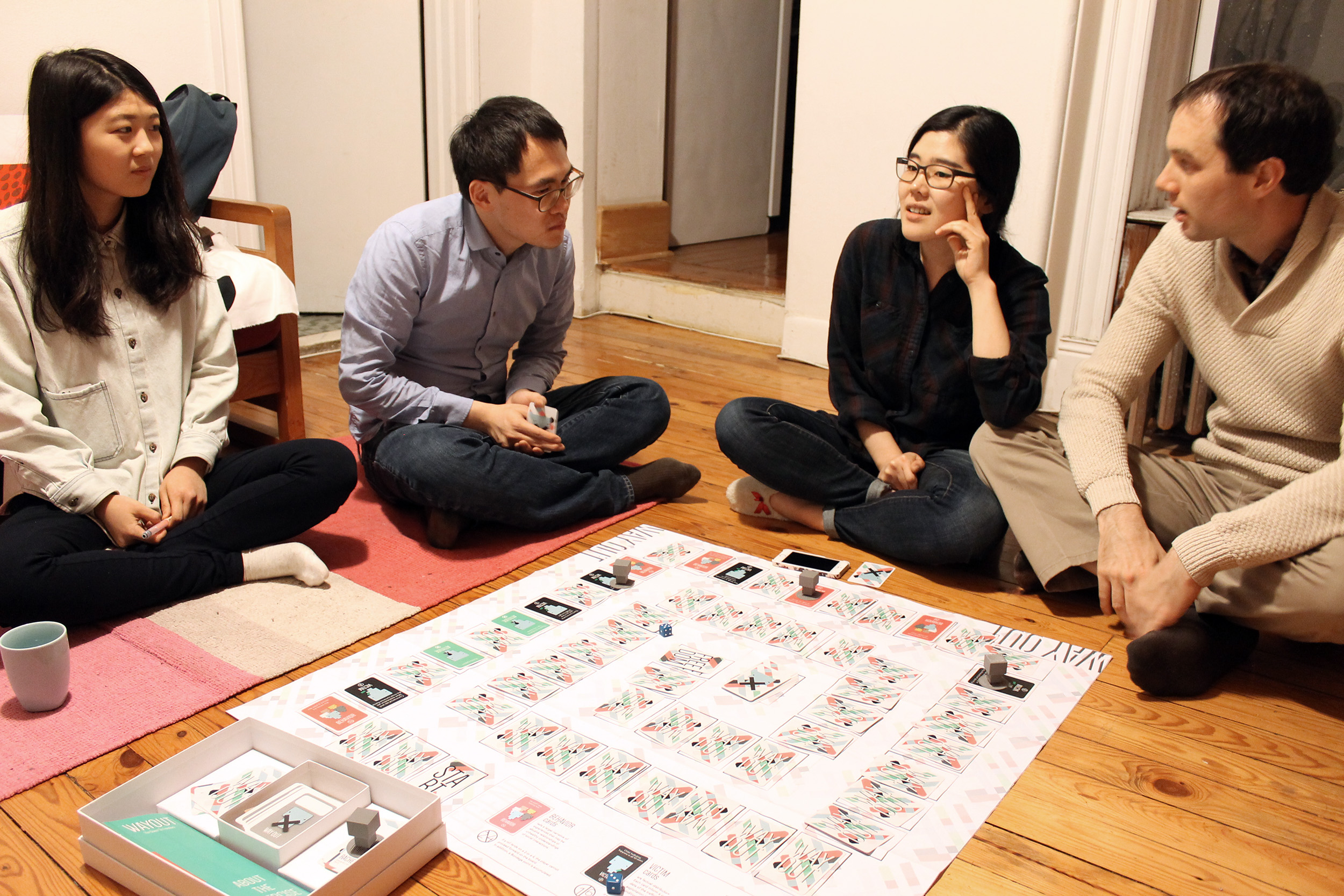
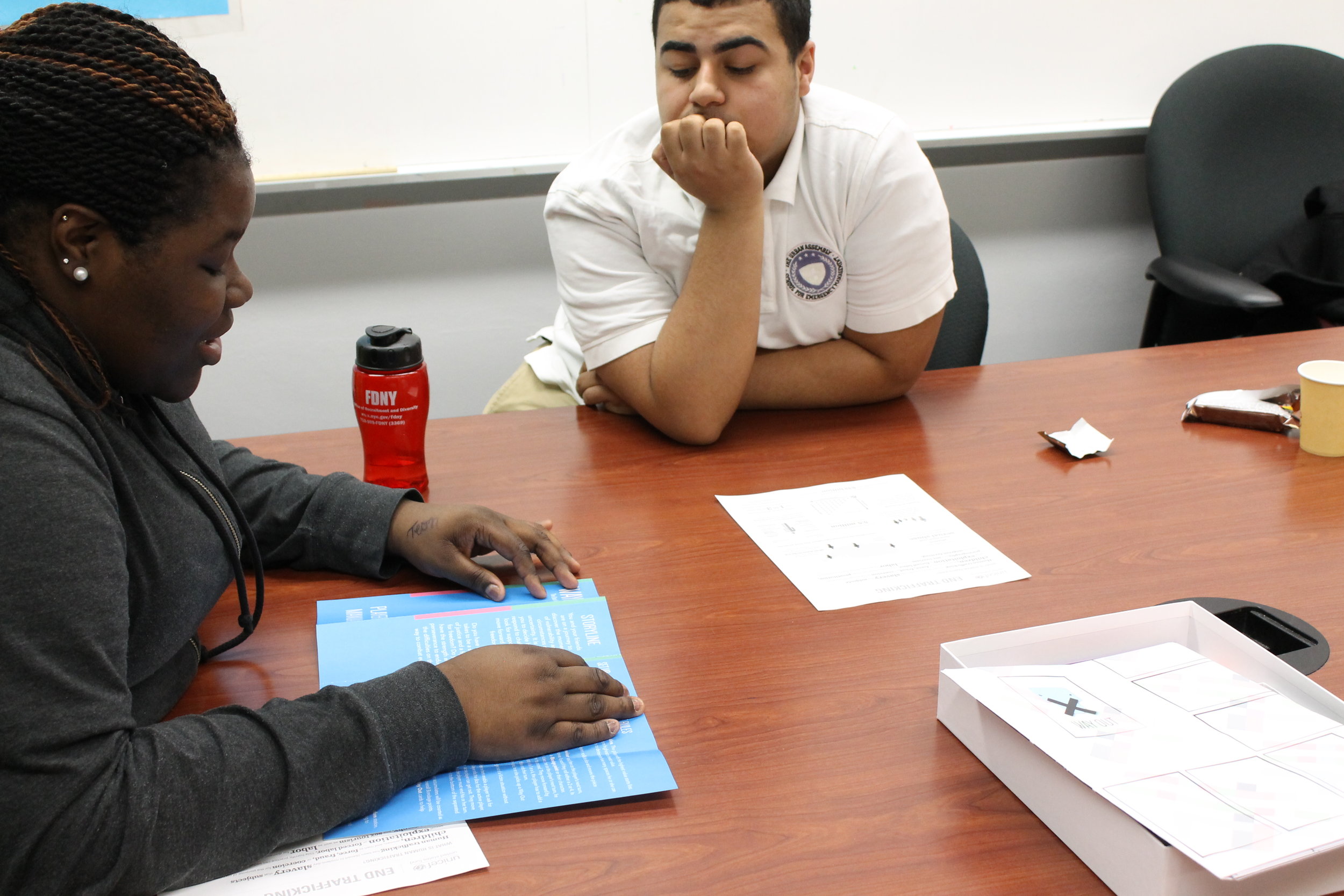
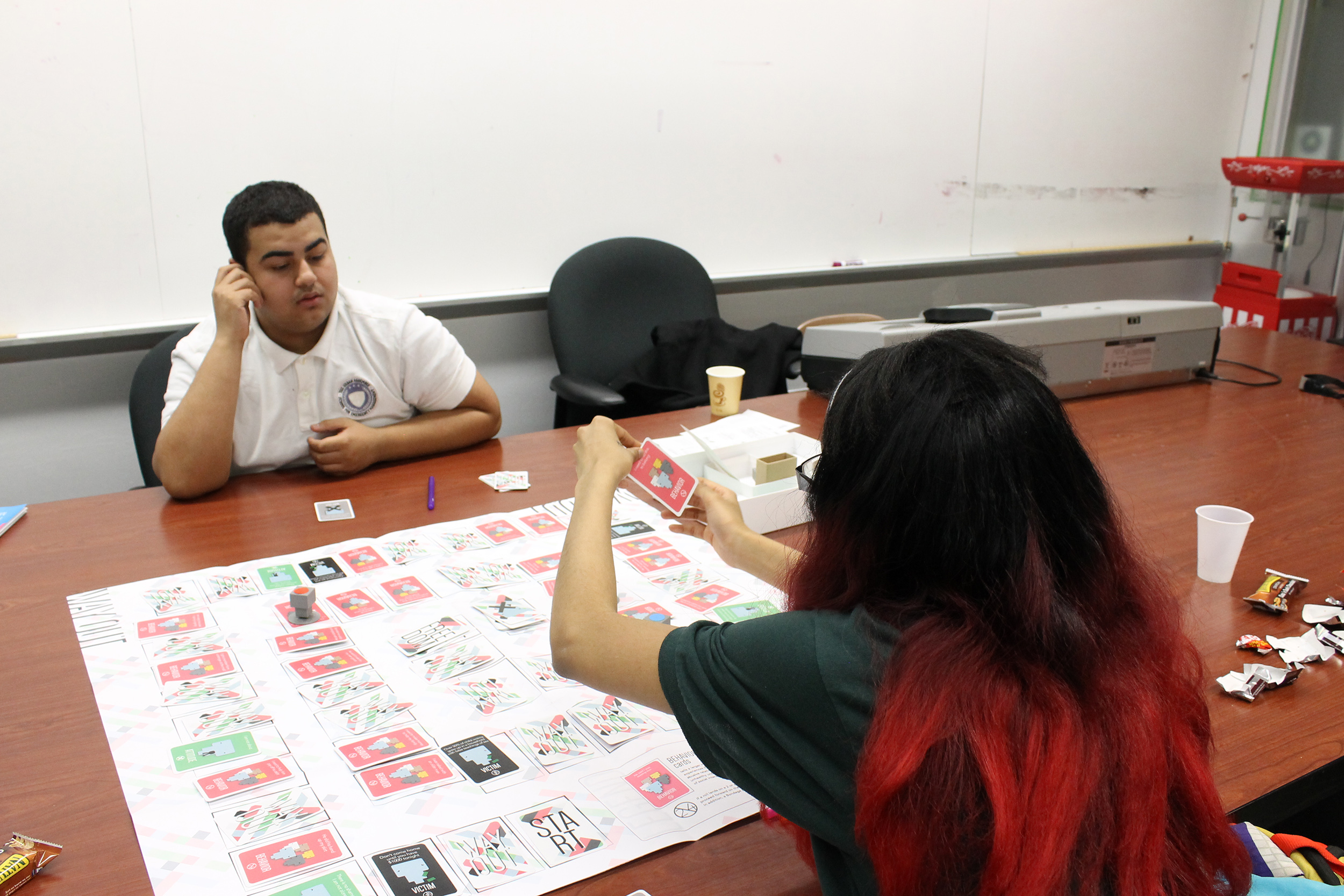
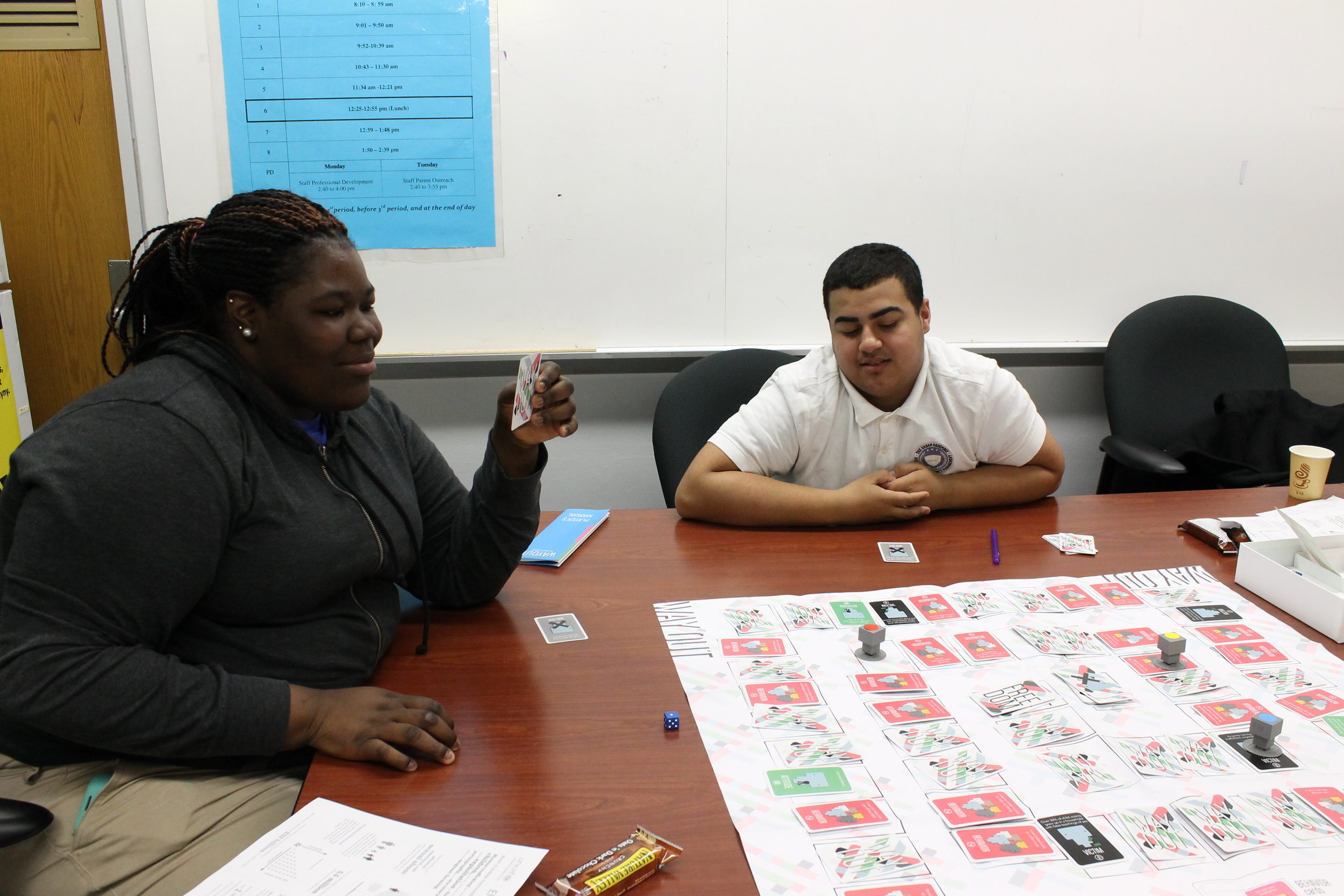
Impact
The game was received with both positive and negative results. The players had fun and the idea of feeling the weight of vulnerability and insecurity cultivated dramatic interactions and conversations between the players. There were moments where the players felt surprised by the facts and moments when they debated about the urgency for the need to rescue. This could also be seen as a negative response because although they understood the consequences of being victimized, the ‘lost’ did not seem like it was something to be upset about because it was still just a game.





